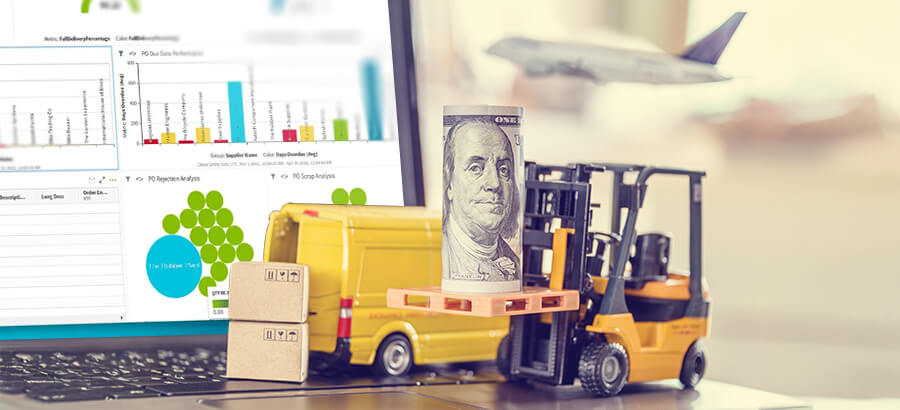Our latest SYSPRO survey revealed that almost 70% of businesses have developed digitalization strategies to overcome future disruption, which indicates a shift to digital systems and processes. One of the key drivers for digital transformation is giving the organization the ability to respond swiftly to changing market conditions and customer demands. The digital transformation of the operations and processes of factories and supply chains is based upon digitization of carefully selected machines and digitalization of the related business processes.
What would businesses be changing without a thorough understanding of the new business landscape and the new technologies that are available and where they would best be used? To understand this question, we will need to understand what are the differences between digitization and digitalization? These terms are often used interchangeably, and yet understanding the difference is critical in the move toward smart factories powered by digital technologies.
So here goes – read on for a greater understanding of these concepts and the role they play in your journey to a smart factory.
Digitization: from analogue information to digital data
Analogue data cannot be collected or digitally manipulated, whereas digital data can be collected and analyzed easily. From a technology perspective if your organization only produced analogue data, it would make it almost impossible to identify any trends around things like customer preferences and demands, as well as to define the optimal future direction for your organization
The first step, therefore, is to get all your information – documents and data – into a digital format. This has two separate activities attached to it. Firstly, collecting all of your legacy data and transferring it into a digital format. This means scanning documents or entering data into a computer manually. The best approach is to start with your key drivers because once that information has been digitized you can start manipulating it to gain tangible benefits for the organization.
The second step will be to convert all critical business data produced that requires analysis to be collected going forward. You’ve probably travelled a fair way down this road already. It may seem like a fundamental change, but digitization has enabled the elimination of paper archives as well as countless sheets, folders and files. Besides taking up far less space, digital data is easy to access, share and manage – enabling processes to be analyzed, optimized, and eventually automated. In the factory environment, one example is the digitization of records for a more efficient method of record keeping, thereby improving the batch traceability process.
Digitalization: transforming business processes
While digitization is all about documents and data, digitalization centers on converting existing business processes to be digital. It goes beyond converting information into digital data and focuses on converting systems into digital systems and introduces the concept of automated processes to improve accuracy and efficiency.
The Internet of Things (IoT), and Industrial Internet of Things (IIOT) is a prime example of digitalization. It’s about the interconnectedness of the supply chain – reading data from a digital machine, acting on it and sending the data to another entity in the chain. Imagine your fridge being able to monitor how much milk you have left and, when more is needed, to send a notification to the dairy which then packages and delivers the milk to you.
With digitalization, you can manage day-to-day performance reliably, learn from the past and respond to future swings in market dynamics. You can drive innovation, create value, improve safety and enhance resource management. Mundane jobs will have been automated and the employees all actively involved in decision making and improving business results. Picture a company that uses analytics supported by Artificial Intelligence (AI) to implement a smart supply chain. A system constantly monitors the performance of its machines, including early warning indicators. Thanks to AI technology, the system has a greater ability to anticipate late deliveries, material shortages and even breakdowns before they happen.
When a sensor triggers an early warning signal, the system automatically analyzes the production performance of the machine, including the trends gathered over the last while and predicts how to best meet current and future demand. It then automatically schedules the maintenance work to take place before the machine breaks down and at a time that results in the lowest possible productivity loss for the business. Or if the machine does break down restructures the production plan and priorities to best serve the critical customers.
Digital transformation: a strategy
Digital transformation is all about the re-imagining of business in the digital age. It’s about using digital technologies to create new – or modify existing – business processes, adjust culture and customer experiences to meet changing business and market requirements.
In the manufacturing and distribution industries, digital transformation often incorporates developing a smart factory which controls processes, makes decisions, communicates error warnings and makes proactive recommendations. It is not about handing over your business to a computer, but rather using technology to give you insights into the operation of your business that you never had before. There is so much data, that the average human will never be able to take the best decisions. But data supported by analytics will already have run all the possible iterations and will recommend the best few options.
As a result, data-driven decision making with a real-time view of the factory and supply chain is a central component of digital transformation. It helps manufacturers and distributors improve efficiency, manage risk, and improve opportunities. An example of digital transformation is the integration of your customer sales volumes with your raw material vendors, integrating the supply chain for greater efficiency and response.
The journey to the smart factory with an ERP system
At the heart of the smart factory is an Enterprise Resource Planning (ERP) system. It provides a platform of integration for all of the different systems, providing the solutions, processes and tools to assist in the management of data for key business insights and informed decision making. Manufacturers and distributors need a focused approach to adopting the emerging technologies that can add value, simplifying complexity wherever possible and ultimately providing a competitive advantage. Your ERP provides much of the foundational framework required for smart, connected factories.
Digital transformation requires carefully considered digitization followed by a digitalization strategy that will set the business on the way to building a digital business. The key to successful digital transformation is aligning these initiatives to your core business objectives, and to prioritize tasks ad processes for digitizing and digitalizing – you cannot digitize and digitalize everything at once as you will not be able to utilize and respond to all the information effectively. In your journey towards digital transformation, it is vital to set up a digital roadmap. Without the roadmap, you cannot plan or budget for the process. You will also not have a communication plan to share with the business, ensuring that they are all onboard.
Manufacturers and distributors also don’t need to see digital transformation as an ‘all-or-nothing’ investment. At a basic level, the rollout of Shop Floor Data Collection is regarded as one of the cornerstones of the Industry 4.0 initiative and a good area to start with. It involves the real-time tracking of jobs against the schedule and identification and analysis of any delays.
This is a unique journey for your business based upon your unique industry challenges and the set of constraints you have within your business. Each transformation will be unique to achieve specific goals while making digital changes to processes, operations, business models and strategies. Prepare and plan carefully, investigate each new technology carefully, understanding what it would do for your transformation.








1 thought on “The smart factory Part 1: Digitization, digitalization and digital transformation”